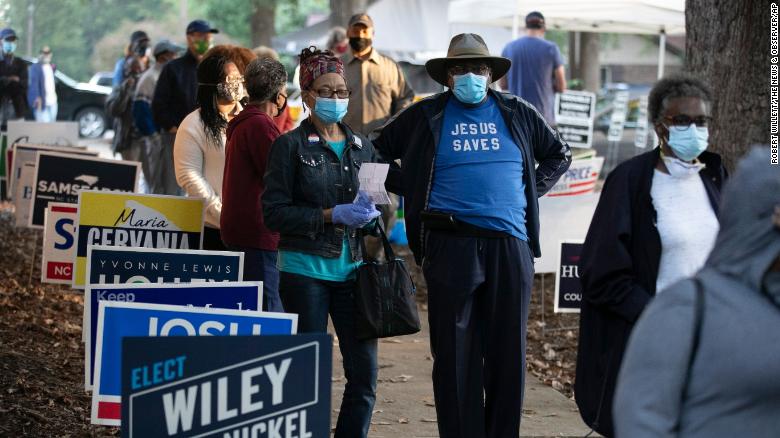More Americans are casting their ballots early than ever before. If that correlates with higher turnout overall — and polling suggests it will — it will be good for democracy.
The higher early voting could also, however, very much affect when we’ll know the winner in key swing states and how soon the election could be called by the major news networks.
States have different deadlines for when absentee or mail ballots must be submitted and when they can be processed. Both of those factors can affect how long it will take for states to count their votes.
It’s no different in the closest six swing states that President Donald Trump won in 2016: Arizona, Florida, Michigan, North Carolina, Pennsylvania and Wisconsin. Former Vice President Joe Biden likely needs to win at least two, if not three, of these states to win the presidency.
Based upon the current laws and past trends, of these states, Florida’s probably the one where I think with a reasonable degree of certainty we’ll know who won on election night.
Why? It comes down to when mail ballots must be received and when they can be processed.
Of those six, the law currently states that most ballots must be received by Election Day in Arizona, Florida and Wisconsin.
In the other three states, Michigan, North Carolina and Pennsylvania, the current law is only that the ballots be postmarked by Election Day.
While the lionshare of the mail votes in each of those states is likely to be submitted long before Election Day, some voters may very well wait it out. A recent Fox News poll in Pennsylvania found, for example, that 10% of likely voters said they’d be voting by mail and submitting their ballot on Election Day.
If the total ends up being that high and the election is close, it will be hard to know who has won in any of those three (Michigan, North Carolina or Pennsylvania) states without seeing the final votes.
It’s not just when the ballots will be submitted, however. It’s when the mail votes that are cast before Election Day are allowed to be processed. As The New York Times notes, “this ranges from verifying signatures, opening envelopes and flattening ballots to get them ready for tabulation.” Allowing processing before Election Day speeds up the counting on election night.
Arizona, Florida, North Carolina and cities with populations over 25,000 in Michigan are allowed to process ballots before Election Day.
Pennsylvania, Wisconsin and populations with less than 25,000 in Michigan only allow processing to begin on Election Day. In those larger Michigan cities, the processing can start just the day before the election.
This means that even though Wisconsin mail ballots have to be received by Election Day, there could be a logjam of them to be counted once the processing begins. Wisconsin’s vote counting looks likely to bleed into the day after the election, according to election officials cited by The New York Times.
Arizona and Florida are the two states where most ballots must be in by Election Day and processing of mail votes can begin before Election Day. But even in Arizona, with a history of high mail voting, the vote count has historically taken a very long time. In 2018, the winner in the Arizona Senate race was not determined until six days after the election.
Florida, on the other hand, has counted its votes quickly with the rules currently in place over the last few election cycles. Unless the margin is razor tight, we probably will know whether Biden or Trump carried the state on election night.
Beyond that, it’s not entirely clear when we can expect most of the votes to be counted. For example, the Times reports that election officials in Michigan don’t expect ballots to be tabulated until the Friday after the election. And only about 5% of ballots in Pennsylvania and Wisconsin were absentees in 2016. It’s likely to be at least five times that in those states this year, if the polling is to be believed. We can’t be sure how the states will handle the crush of absentee voting.
Now, none of this would necessarily be a problem for counting ballots if the early votes were expected to have the same partisan breakdown as the ballots cast on Election Day. Of course, that’s not going to be the case. Trump has been quite against mail voting, and voters seem to have gone to their partisan corners.
An ABC News/Washington Post poll conducted late last month found Biden was ahead by 36 points among those voting before Election Day. Trump was up by 19 points among those who said they’d vote on Election Day.
There’s just no precedent for any spread like that or for the number of folks voting early.
>>>>

